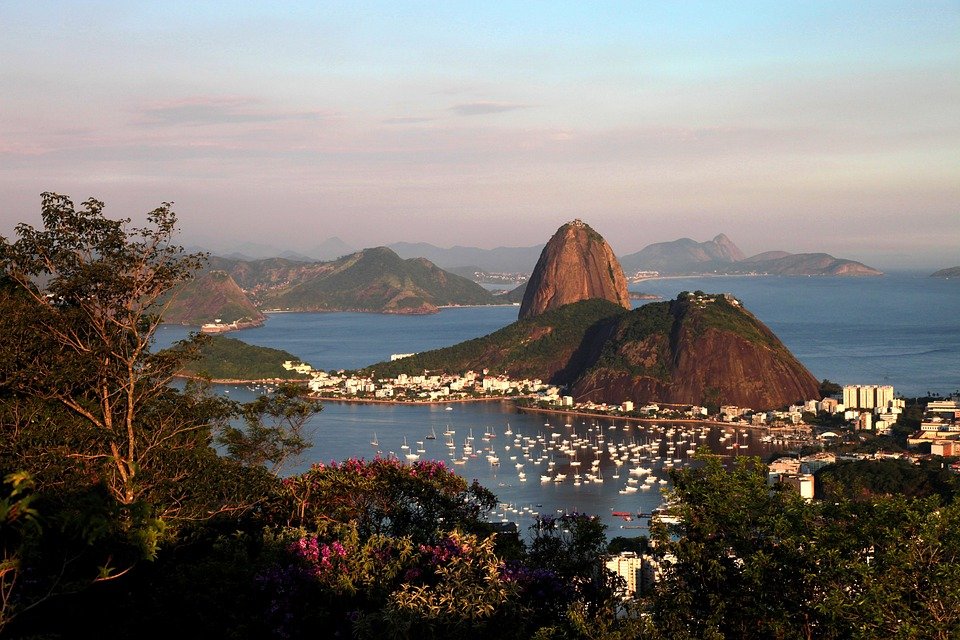Wondering when to go to Rio de Janeiro without running into huge crowds or bad weather? Planning a trip can be exciting, yet overwhelming, especially when you consider the myriad factors that could affect your experience. The best time to visit Rio de Janeiro really depends on the weather, your budget, local events, and what activities you have in mind. So, let's dive into the details to help you figure out your ideal time to visit this vibrant city!
Overview of Rio de Janeiro’s Climate
Rio de Janeiro boasts a tropical coastal climate, meaning it enjoys warm temperatures year-round with distinct wet and dry seasons. Here's a quick breakdown of the general climate conditions:
-
Summer (December to March): This is when Rio shines in all its glory but also when humidity can peak. Expect average temperatures around 30°C (86°F). This period includes the famous Carnival season, creating a lively atmosphere but attracting crowds.
-
Autumn (April to June): With temperatures averaging between 20°C and 28°C (68°F to 82°F), autumn is one of the best times to experience pleasant weather without the intense heat.
-
Winter (July to September): Winter in Rio is mild, with temperatures usually ranging from 18°C to 25°C (64°F to 77°F). While it's the driest season, it's still warm enough for beach outings.
- Spring (October to November): Spring offers a sweet spot as temperatures rise again, averaging around 28°C (82°F), making it pleasant for both outdoor activities and cultural events.
Overall, the weather in Rio de Janeiro can be a huge part of your trip experience, whether you want to lounge on the beach or explore the vibrant neighborhoods.
Month-by-Month or Seasonal Breakdown
January – March (Summer & Carnival Season)
- Weather: Hot and humid, with average highs around 30°C (86°F).
- Events: Carnival is the highlight of this season, drawing visitors from all over.
- Pros: Energetic vibe, parades, street parties.
- Cons: Crowds, high prices on accommodations.
- Best For: Party-goers and those looking to immerse in Brazilian culture.
April – June (Autumn)
- Weather: More comfortable, with temperatures averaging 20°C to 28°C (68°F to 82°F).
- Events: International Jazz Festival (April), World Cup Events (if applicable).
- Pros: Fewer tourists, good hotel deals.
- Cons: Potential for occasional rain.
- Best For: Budget travelers and those avoiding crowds.
July – September (Winter)
- Weather: Mild, with less humidity and average temperatures around 18°C to 25°C (64°F to 77°F).
- Events: Winter Festivals, Festa de Iemanjá (February).
- Pros: Ideal for those who enjoy outdoor sports or sightseeing.
- Cons: It can get a bit chilly in evenings.
- Best For: Families and outdoor enthusiasts.
October – December (Spring)
- Weather: Warming up with average temperatures of around 28°C (82°F).
- Events: Festival of the Sea (November), Christmas and New Year's celebrations.
- Pros: Great beaches, lower crowd levels than summer.
- Cons: Can start to get humid again.
- Best For: Romantic getaways and beach lovers.
Tips Based on Travel Style
Not everyone travels for the same reasons, so here's how you can tailor your visit to suit your style:
For Budget Travel
Consider visiting during the off-season, particularly in May or June. Prices for flights and hotels drop significantly, and you can enjoy the sights without the bustling crowds.
For Avoiding Crowds
The months right after Carnival, like March and early April, see a dip in tourists. This can be a great time if you want to explore iconic spots like Christ the Redeemer or the beaches of Copacabana in relative peace.
For Outdoor Activities or Cultural Events
Spring, especially October and November, offers perfect temperatures for hiking and exploring. Additionally, many cultural festivals occur during this time, providing a glimpse into local traditions.
For Romantic or Solo Trips
Late autumn or winter months, such as June or even September, can provide a delightful, more intimate atmosphere. The weather remains pleasant, and places like Sugarloaf Mountain become more serene. Great for a romantic sunset or a solo reflection on the beach.
It really depends on what kind of experience you're looking for.
Final Thoughts
Some travelers love January because of the lively vibe of Carnival, while others aim to soak in the quieter atmosphere of June. By understanding the various seasons, climate conditions, and what each month offers, you can tailor your trip to make the most of your time in this enchanting city.
FAQ
Is January a good time to visit Rio de Janeiro?
Yes, if you enjoy festivals and a vibrant atmosphere, but be prepared for large crowds.
When is the rainy season in Rio de Janeiro?
Typically from December to March, with the heaviest rainfall occurring in January.
What's the cheapest time to visit Rio de Janeiro?
April to June generally sees lower prices on flights and accommodations.
What's the peak season in Rio de Janeiro?
Carnival season (late February to early March) is considered peak season, attracting visitors worldwide.
No matter when you choose to go, Rio de Janeiro awaits with open arms and is ready to offer its warm, vibrant culture. Happy travels!








